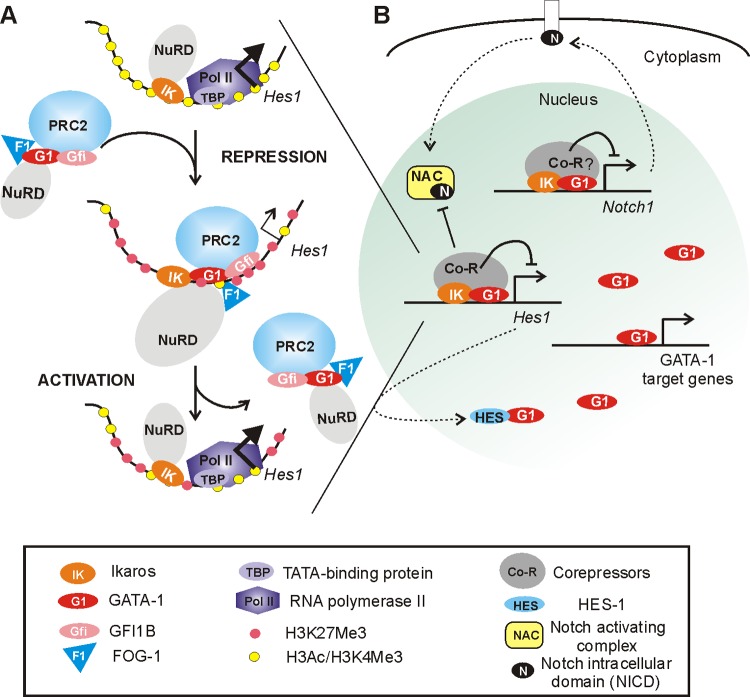Fig 11.
Model showing the influence of Ikaros and GATA-1 on the Notch pathway during differentiation in erythroid cells. (A) Ikaros is recruited to Hes1, where it facilitates GATA-1 chromatin binding. GATA-1 then promotes the recruitment of different factors and complexes with the capacity to repress gene transcription and, hence, represses the Hes1 gene. Ikaros, GATA-1, and EZH2 are required for Hes1 repression. (B) The recruitment of Ikaros and GATA-1 interferes with the recruitment of RBPJ and the Notch-activating complex (NAC) to the Hes1 promoter (Fig. 10). The repression of Notch1 by Ikaros leads to a decreased level of NICD, a critical component of the NAC released upon cleavages of the Notch receptor after binding of a Notch ligand (Fig. 10). Since HES1 interferes with GATA-1 activity in the nucleus (23), the repression of Notch1 and Hes1 by Ikaros and GATA-1 favors a high concentration of free GATA-1 that can bind to its target genes.

